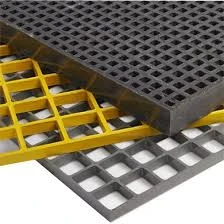loading...
- No. 9, Xingyuan South Street, Dongwaihuan Road, Zaoqiang County, Hengshui, Hebei, China
- admin@zjcomposites.com
- +86 15097380338
- Welcome to visit our website!
Innovative Applications of FRP in Modern Steel Structures Design and Construction
FRP Steel Structures A Revolutionary Approach to Modern Engineering
In recent years, the field of construction and engineering has witnessed a significant transformation, particularly with the integration of Fiber Reinforced Polymer (FRP) into steel structures. Traditional steel construction, while robust and reliable, often comes with limitations related to corrosion, weight, and overall sustainability. FRP presents a groundbreaking alternative that addresses many of these challenges, paving the way for more sustainable and efficient structures.
Understanding FRP
Fiber Reinforced Polymer (FRP) is a composite material made of a polymer matrix reinforced with fibers, typically glass, carbon, or aramid. This combination of materials results in a lightweight, high-strength, and corrosion-resistant product. The unique properties of FRP, including its excellent tensile strength and low thermal conductivity, make it an ideal candidate for enhancing steel structures.
Benefits of Integrating FRP with Steel Structures
1. Corrosion Resistance One of the primary drawbacks of traditional steel is its susceptibility to rust and corrosion, particularly when exposed to harsh environments. When FRP is used as a reinforcement or as an outer layer in steel structures, it significantly increases the lifespan of the structure by providing a corrosion-resistant barrier. This is especially beneficial in regions with high humidity, salt exposure, or chemical environments.
2. Weight Reduction FRP is remarkably lightweight compared to traditional materials. By integrating FRP components into steel structures, engineers can reduce the overall weight of the buildings or bridges without compromising structural integrity. This weight reduction not only simplifies transportation and installation but also may reduce the foundational requirements, leading to cost savings on materials and labor.
3. Enhanced Durability The combination of FRP and steel results in structures that are more durable and capable of withstanding environmental stresses. FRP materials can absorb greater amounts of energy, making them suitable for construction in seismic-prone areas. This synergy enhances the overall resilience of the structure, leading to improved safety and reliability.
frp steel structure

4. Sustainability As the world increasingly shifts towards sustainable construction practices, the use of FRP in steel structures aligns with this trend. FRP materials are often made from recycled fibers and can be designed to minimize waste during construction. Moreover, their longevity reduces the need for frequent repairs or replacements, contributing to greener building practices.
5. Design Flexibility The versatility of FRP allows for innovative architectural designs that might be challenging to achieve with traditional materials. Its ability to be molded into various shapes provides architects and engineers with the freedom to explore complex geometries and aesthetics. This capability can contribute to the creation of iconic structures that enhance the urban landscape.
Applications of FRP Steel Structures
FRP steel structures find applications in various fields, including transportation, bridges, buildings, and industrial components. In bridge design, for instance, FRP reinforcements can improve load-bearing capacity while maintaining a lightweight profile. In the construction of high-rise buildings, integrating FRP can enhance resistance to wind loads and seismic activity, contributing to safer urban environments.
Challenges and Future Directions
Despite the numerous benefits, the adoption of FRP in steel structures isn't without challenges. The initial costs of FRP materials can be higher than traditional alternatives, which may deter some projects. Additionally, there is still a need for extensive research and development to fully understand the long-term performance of FRP in various applications.
The future of FRP steel structures appears promising. Continued advancements in material science, coupled with increasing awareness of sustainable practices, are likely to fuel further innovations. As engineers and architects continue to explore the potential of FRP, we can expect to see more resilient, durable, and aesthetically striking structures in our built environment.
In conclusion, the integration of FRP with steel structures represents a significant advancement in engineering and construction. By addressing traditional steel limitations, FRP offers a modern solution aligned with sustainability and innovation, thereby reshaping the future of the construction industry.
-
Why Choose a Galvanized Water Tank for Your Storage NeedsNewsMay.21,2025
-
The Strength and Durability of FRP GratingNewsMay.21,2025
-
The Importance of Water Treatment Systems for Clean and Safe WaterNewsMay.21,2025
-
The Advantages of FRP Rebar for Construction ProjectsNewsMay.21,2025
-
Say Goodbye to Hard Water with a Reliable Water SoftenerNewsMay.21,2025
-
Maximize Your Water Storage with a Sectional Water TankNewsMay.21,2025
-
The Power of Filter VesselsNewsMay.19,2025
